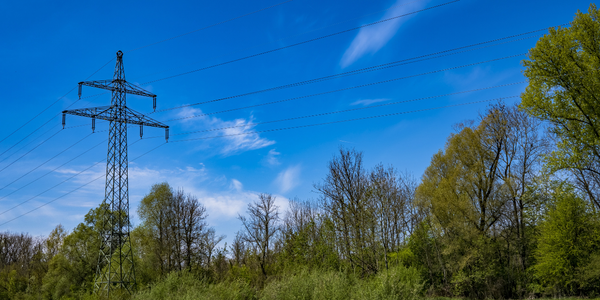公司规模
Large Corporate
地区
- Asia
国家
- Singapore
产品
- DataRobot
技术栈
- Automated Machine Learning
实施规模
- Enterprise-wide Deployment
影响指标
- Cost Savings
- Productivity Improvements
技术
- 分析与建模 - 预测分析
适用功能
- 商业运营
用例
- 需求计划与预测
- 补货预测
服务
- 数据科学服务
关于客户
NTUC Income 是新加坡领先的综合保险公司,为 200 多万客户提供 370 万份保单。它是全国工会联合会的一部分,全国工会联合会是新加坡唯一的全国工会中心,由 58 个工会和 10 个社会企业组成。这些社会企业由政府建立,旨在帮助稳定商品和服务价格、增强工人的购买力并促进更好的劳资关系。NTUC Income 是新加坡唯一的保险合作社,为全国 200 多万客户提供人寿、健康和一般保险产品。它既是新加坡领先的综合保险公司,也是最大的汽车保险公司。
挑战
新加坡顶级综合保险公司 NTUC Income 正面临着整个保险行业索赔成本不断上升的问题。随着经营成本的增加,该公司需要了解导致索赔成本上升的因素、受影响的人以及应采取的措施。此外,随着保险日益成为一种商品,准确的定价变得比以往任何时候都更加重要。然而,保险定价分析可能很复杂、重复且耗时。使用广义线性模型 (GLM) 进行定价分析的传统方法由于多种限制并不理想。这些限制包括假设评级因素与索赔成本之间存在直线关系、耗时的流程以及无法分析索赔描述中的文本。该公司需要一个能够解决其定价分析挑战并与团队一起扩展的解决方案。
解决方案
NTUC Income 求助于自动化机器学习平台 DataRobot 来开展大规模定价分析项目。该平台用于识别风险、索赔频率以及索赔严重程度和性质的变化。DataRobot 的功能影响和词云功能用于识别索赔频率的模式,并直观地展示索赔描述随时间的变化。从数据中获得的见解使 NTUC 的保险精算师能够制定更准确的技术定价。他们可以更好地估计风险溢价,识别错误定价的风险,并考虑未来的通货膨胀。最后一步是从技术定价过渡到商业定价。使用 DataRobot,保险精算师可以分析竞争对手的报价样本,并概括出竞争对手对不同类型的保单的定价。这使他们能够平衡利润率和数量,并找到客户愿意支付的实际保费率。
运营影响

Case Study missing?
Start adding your own!
Register with your work email and create a new case study profile for your business.
相关案例.
Case Study
Pepsico's Transformation to Smarter Sales Forecasting with Designer Cloud
PepsiCo, a global consumer packaged goods company, faced a significant challenge in calibrating sales forecasting to supply the right product quantities to its retailers. The sales forecast incorporated a variety of data, including warehouse data, store stock data, and promotional forecast data, all of which were provided by retailers in different file formats and delivered using various methods. The primary challenge was the speed of preparing a sales forecast. With the existing Microsoft Access and Excel-based processes, the time required to prepare this data was so extensive that analysts could only leverage it once a month or not at all. This inefficiency risked under or oversupplying retailers, potentially impacting PepsiCo's business operations and customer relationships.

Case Study
Gexa Energy and AutoGrid's Innovative Demand Response Programs in ERCOT
Gexa Energy, a leading retail electricity provider in Texas, was seeking to introduce new demand response programs for its commercial and industrial customers in the Electric Reliability Council of Texas (ERCOT) market. The challenge was to provide a platform that would allow these customers to lower their energy bills by adjusting their energy consumption during peak energy demand or high wholesale electricity prices. The solution needed to be intelligent, scalable, and offer both manual and automated options for adjusting energy consumption. The demand response programs needed to include Emergency Response Service (ERS), Real-Time Price Response (RTPR), and 4 Coincident Peak (4CP).

Case Study
ZettaNet's Agile Juniper Network Meets Booming Digital Demand in Australia
ZettaNet, a privately-held company based in Perth, Australia, was facing a significant challenge due to the exponential demand for enterprise network, data center, and cloud services in the region. The company's business growth necessitated an upgrade of their core network to meet the increasing bandwidth requirements of their customers. The customers, which primarily include managed service providers, were demanding 1 Gbps connectivity between locations. These service providers then deliver network, data center, cloud, and voice services to a diverse range of customers including local businesses, schools, hospitals, residential communities, and government offices in Western and Southern Australia. The challenge for ZettaNet was to meet this high-capacity network services demand while maintaining profitability.
Case Study
Procter & Gamble Implements Terra Technology's Demand Sensing for Improved Forecast Accuracy
Procter & Gamble (P&G) faced significant challenges in accurately forecasting short-term demand for their consumer products. Their existing 24-month forecast provided a good overview for monthly or weekly production, but it was insufficient for the immediate needs of supply chain planning and manufacturing teams. These teams required a short-term forecast to plan production effectively and avoid 'fire-fighting' practices. P&G needed a solution that could provide accurate short-term demand forecasts to ensure agility and flexibility in manufacturing, especially for products with very short production and order lead times. The company explored various solutions but found that most big software companies lacked the agility to meet their specific demand sensing needs. Terra Technology's Real-Time Forecasting, later known as Demand Sensing (DS), emerged as a promising solution due to its specialized focus on consumer packaged goods (CPG) demand planning and forecasting.
Case Study
Blue Bottle Coffee Enhances Ordering Accuracy and Reduces Waste with ML-Driven Demand Forecasting
Blue Bottle Coffee (BBC), a global coffee roaster and retailer, faced a significant challenge in managing the supply of pastries across its international network of cafes. The company was using a manual ordering system, where cafe leaders estimated the required quantity of pastries based on historical sales data, current inventory, and growth projections. This system was effective when BBC had a few cafes, but with over 70 cafes worldwide, it became inefficient and inaccurate. The inaccuracies led to either under-ordering, causing sell-outs and customer dissatisfaction, or over-ordering, resulting in food waste and profit loss. The suboptimal utilization of pastries was also affecting BBC's bottom line. Therefore, BBC needed a scalable, precise, and predictive ordering solution to improve pastry ordering accuracy, reduce food waste, and meet its sustainability goals.
Case Study
MARS Incorporated: Leading a Global Digital Transformation
MARS Incorporated, a multinational manufacturer, faced significant challenges in digitizing and standardizing processes across its mid-markets globally. The company's reliance on legacy solutions necessitated continuous, time-consuming upgrades and made data compilation and comparison across different regions and business units difficult. Excel spreadsheets were extensively used for forecasting in smaller markets, leading to disconnected processes, siloed working environments, and increased risk of data inconsistencies and inaccuracies in demand forecasting. MARS also struggled with a lack of visibility across its midmarket footprint, scattered critical data across various systems and spreadsheets, a low degree of automation, and insufficient statistical analytics for demand planning. The absence of a standard process for demand planning made it challenging to consolidate KPIs and gain a comprehensive view of demand trends and supply chain performance.







